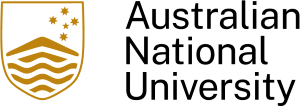Learning to facilitate learning
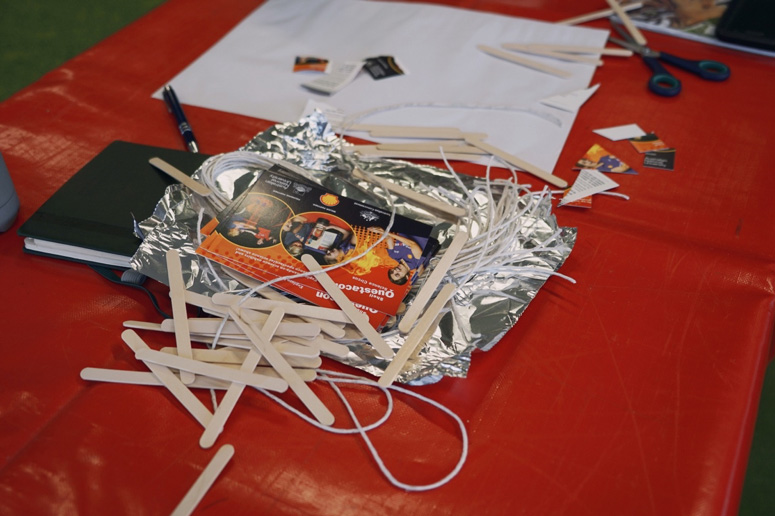
How many things can you make out of alfoil, cotton string, paper cards and popsicle sticks?
Our Master of Science Communication Outreach students of the Shell Questacon Science Circus managed to come up with 80 different prototypes.
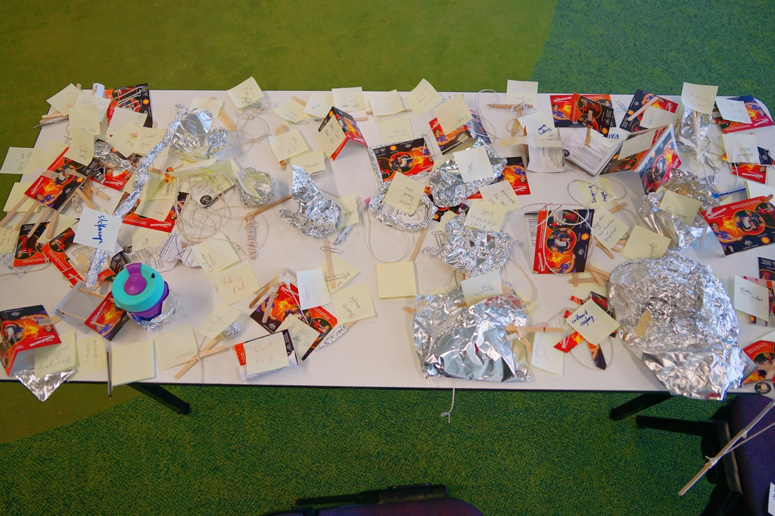
[Image: Prototypes built with those four kinds of materials and their description notes.]
How did they do it? The magic move was a four-minute brainstorming before they started their “proto-storming”.
Forming four groups, the students took turns observing each kind of materials and writing down its properties on a paper.
Every 60 seconds, they moved on to the next table and lengthened the list with new properties.
The rotation kept going until everyone explored all four sets of materials and wrote on four lists.
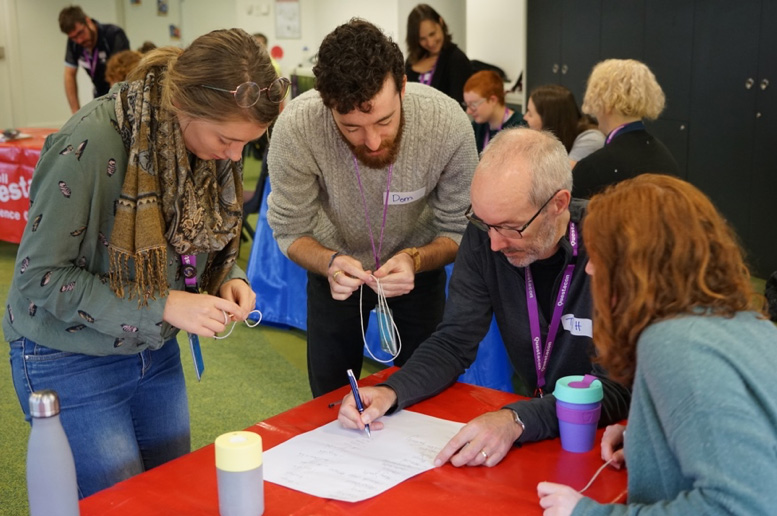
[image: SCOM Outreach students writing down properties of strings]
Only then did the students set out to create combinations of those properties to make as many prototypes of things as possible in eight minutes.
The results were diverse. Their creations ranged from a tiny makisu (sushi mat) to a small table to a marionette control bar. Someone handed in something as simple as a string knot, whereas others crafted multi-component models such as a bow and a fishing rod.
“It got my brain into gear,” said Outreach student Peter Newman.
“It was just fantastic to see the huge number of wonderful, and terrible, ideas we came up within only a few minutes.”

[image: Peter wearing a foil hat.]
But the students didn’t do it purely to have fun or to be amazed.
Alongside other hands-on activities, the proto-storming was part of a training workshop on professional learning (PL) included in the science communication Fieldwork Placement course.
The students will use these skills directly through the year, travelling as part of the Shell Questacon Science Circus.
As the session proceeded, the students gradually went deeper to learn about why the facilitators organized the activities in this way, and how to make the audience more engaged.
After the proto-storming, the students embraced the challenge of using the same materials to build prototypes for specific functions. One group of students, for instance, were asked to create toys to entertain dogs.
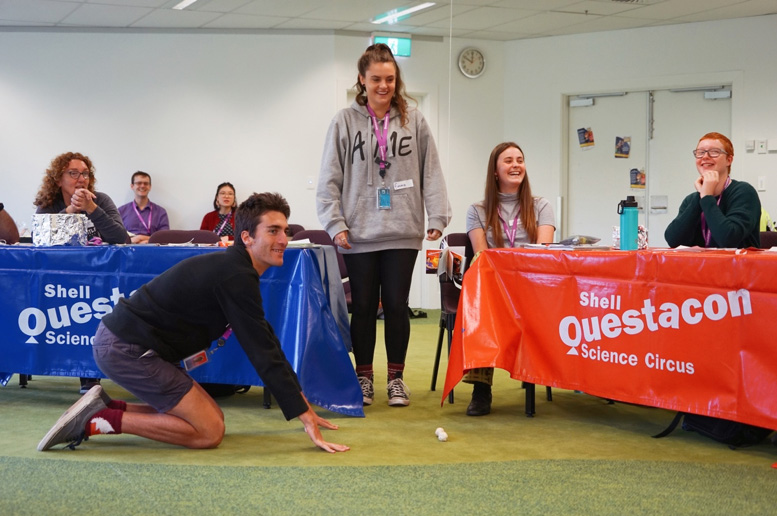
[image: Students showcasing the dog toys they made.]
They then went on to making simple gadgets like marshmallow catapults, linking them with scientific concepts and phenomena in daily life.
After participating in each activity, the students reflected on the purpose of the arrangement and thought about adjustments that they could make to yield better learning outcomes.
They discussed things such as what else materials could be used in the proto-storming and how they could ease the audience if they had difficulty starting to build something.
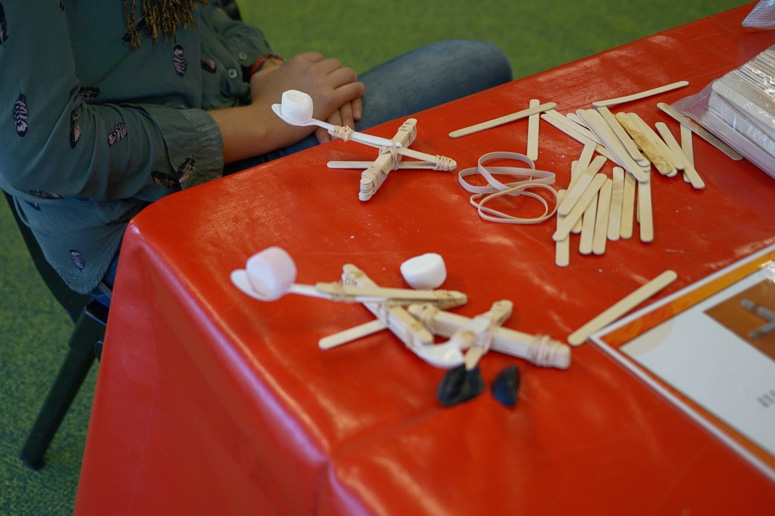
[image: marshmallow catapults made by the students]
As a former maths teacher, Peter appreciated the design of the training session.
“I liked how each stage in the workshop modelled how you might run things in a classroom,” he said.
“I thought it was very clever how each set of reflection questions gave a different spin to each station as we moved through them. It effectively showcased different ways of framing the activity.”
To Emma Dunn, who had been facilitating workshops for years before joining the Science Circus, the training session reaffirmed a fundamental notion.
“Facilitation is about getting the room to work together and not about standing up the front talking,” she remarked.

[image: Students learned in facilitated learning]
The process of learning about facilitating learning will keep flowing.
A week later, Emma and all her teammates in the Science Circus designed and delivered their own Professional Learning Workshop and passed the experience to primary school teachers.
Jointly run by the Australian National Centre for the Public Awareness of Science at The Australian National University and Questacon – The National Science and Technology Centre, the Shell Questacon Science Circus travels to remote and regional areas of Australia performing science shows and workshops for schools and communities.
The Master of Science Communication Outreach is a one-year program that fuses theory and practice to give graduates the knowledge and skills to communicate science through outreach programs, shows, workshops, in the media, online and more. Applications close 31 August each year.
This article written by CPAS student Calo Huang.
